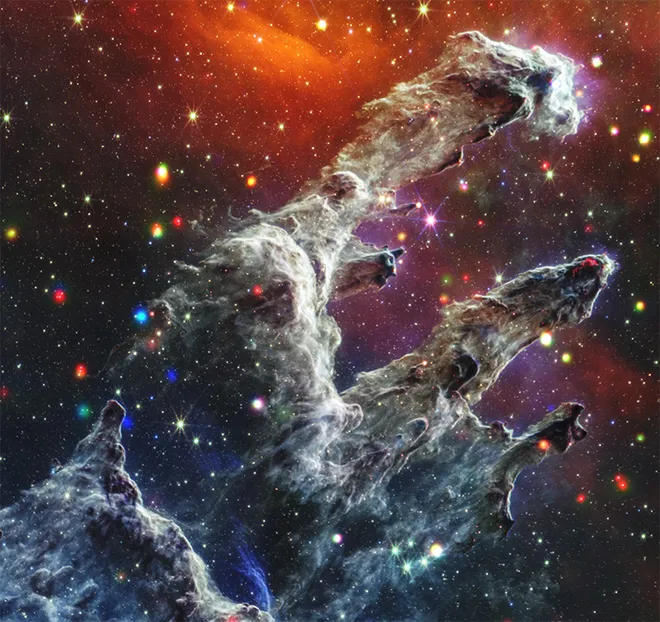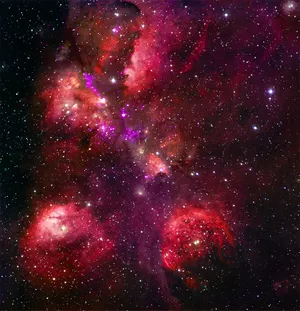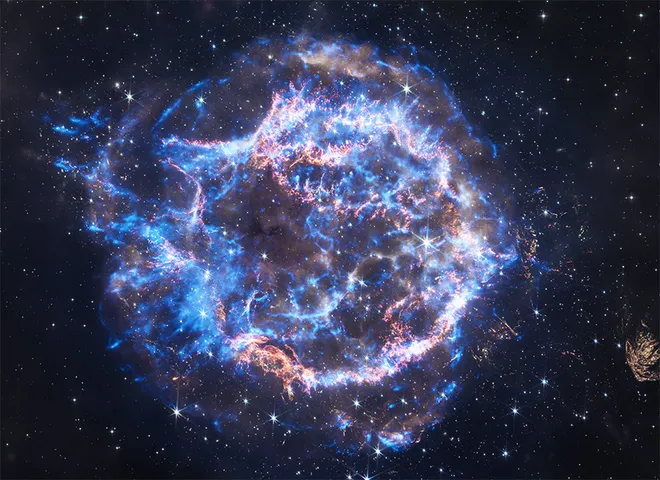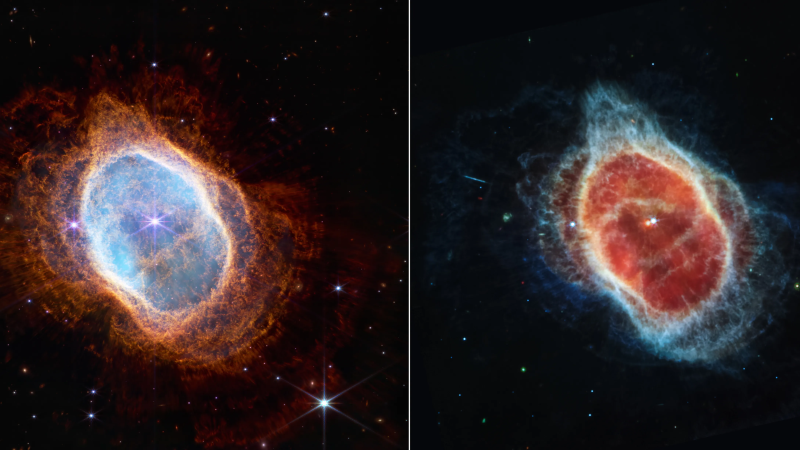NASA releases eye-popping, never-before-seen images of nebulae, galaxies in space
Dozens of never-before-seen images of cosmic objects from the corners of the universe captured by the world's most powerful X-ray telescope were released on Tuesday.
The breathtaking images, taken by the Chandra X-Ray Observatory, were released by NASA in honor of the 25th anniversary of the telescope's launch into space.

Taken with X-Ray data collected by Chandra, the pictures show a stunning range of phenomena, from the remnants of a supernova, to a nebula thousands of light years from Earth, to the center of the Milky Way galaxy, according to a NASA news release. The recently released images are part of nearly 25,000 collected by Chandra over its time in space.
Chandra observed the cosmic objects for up to thousands of hours, according to the photo gallery released by NASA. For instance, it took the telescope 64 days of observation time and 370 observations over the course of 20 years to capture an image of the Milky Way's center, which is about 26,000 light-years away from Earth.
Other images show the vivid colors of nebulae, like the crimson red of the Cat's Paw Nebula, which lies 4,370 light years away from Earth, and the bright purple of the Crab Nebula within the Taurus constellation. One image shows Cassiopeia A, a remnant of a supernova 340 years ago. Another is the product of Chandra's nearly 10 hours of observing the planet Jupiter.

More:Starliner astronauts are 'not complaining' about longer stay in space
Chandra uses super smooth mirrors to focus X-rays
Chandra, launched on July 23, 1999, is one of four great telescopes released by NASA that decade, including the Hubble and Spitzer Space Telescopes, and the Compton Gamma Ray Observatory. Only Chandra and Hubble are still in space.
“Astronomers have used Chandra to investigate mysteries that we didn’t even know about when we were building the telescope — including exoplanets and dark energy," Pat Slane, director of the Chandra X-ray Center at the Smithsonian Astrophysical Observatory in Cambridge, Massachusetts, said in the news release.


Unlike Hubble, which traces a close, circular path around Earth, Chandra charts an elliptical orbit around Earth, traveling as close as 6,000 miles and as far as 86,400 miles from the Earth on its 64-hour orbit.
Chandra is outfitted with four pairs of the smoothest and cleanest mirrors ever made, according to NASA. The mirrors focus incoming X-rays to a spot half as wide as a human hair, where they are captured and recorded by Chandra's science instruments.
Among Chandra's observations are the oldest black hole ever discovered and two galaxies colliding. The telescope also uncovered the first proof of the existence of dark matter.
Cybele Mayes-Osterman is a breaking news reporter for USA Today. Reach her on email at cmayesosterman@usatoday.com. Follow her on X @CybeleMO.
Disclaimer: The copyright of this article belongs to the original author. Reposting this article is solely for the purpose of information dissemination and does not constitute any investment advice. If there is any infringement, please contact us immediately. We will make corrections or deletions as necessary. Thank you.



